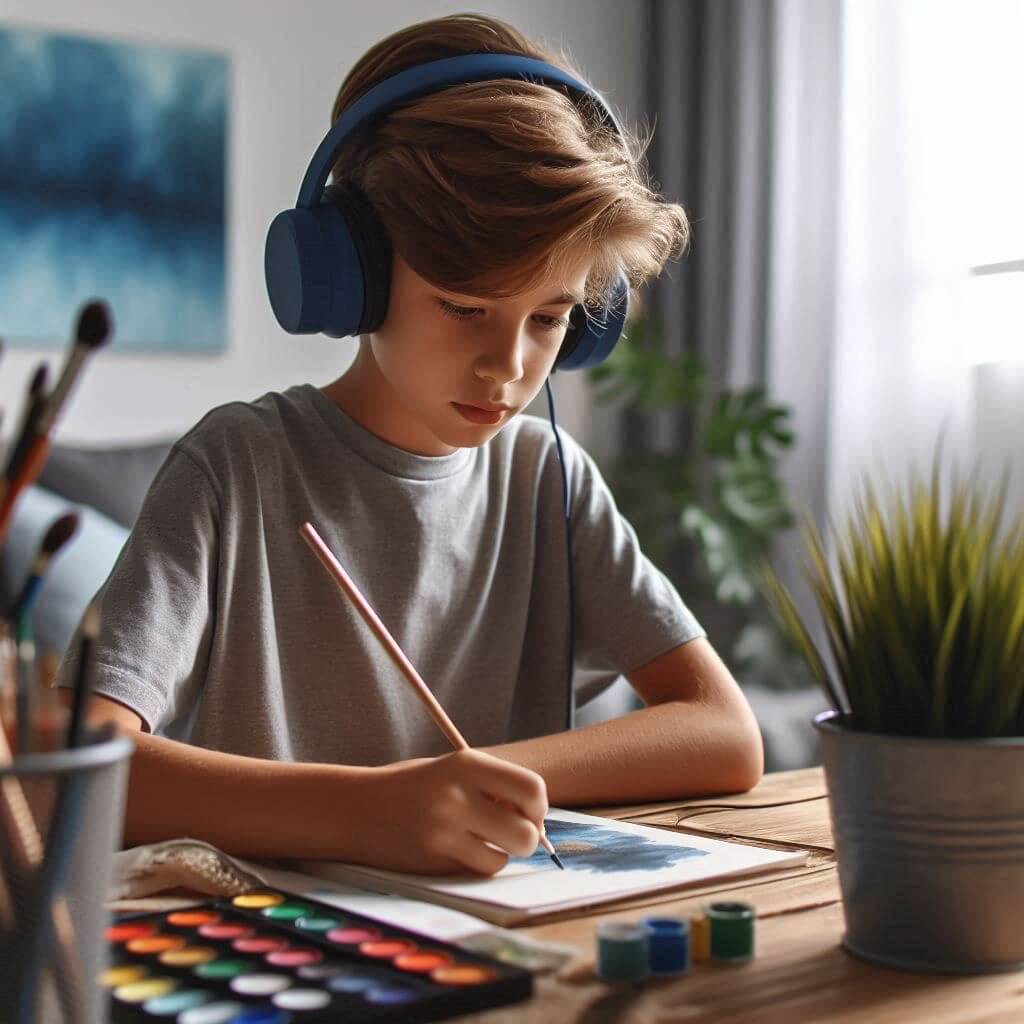
Navigating the Journey: Parenting a Child with ADHD and Autism
Imagine a classroom where your child, who has ADHD and Autism, raises their hand excitedly to answer a question after weeks of struggling to participate. This small yet profound moment marks progress not just for them but for you as a parent who worked tirelessly to support their growth. These victories, however small, reaffirm the strength and determination it takes to parent neurodiverse children.
Parenting children with ADHD and Autism is a journey filled with challenges and triumphs. From addressing emotional outbursts to advocating in schools and nurturing social skills, each step requires understanding, perseverance, and creativity. This guide takes an in-depth look at practical solutions, collaborative strategies, and inspiring stories that empower families to navigate this path with confidence.
Celebrating and Fostering Strengths

Children with ADHD and Autism offer unique perspectives and talents. By focusing on their strengths, you can build their confidence and turn challenges into opportunities.
Creativity and Problem-Solving Skills
Neurodiverse children often excel in creative pursuits or unconventional problem-solving. Jack, an 11-year-old with ADHD, expressed his energy through painting imaginative scenes. His parents encouraged him by providing an art studio space at home, where he could immerse himself in his passion.
Tip for Parents: Identify and nurture your child’s interests. Whether it’s art, puzzles, or music, dedicating time to their passions can have transformative effects on their confidence and skill development.
Specialized Interests
Children with Autism often develop focused interests, excelling in areas like science, art, or technology. Maya, a 12-year-old girl fascinated by animals, created detailed posters about endangered species. Her parents supported her by visiting wildlife sanctuaries and sharing her work with family and teachers.
Tip for Parents: Encourage your child to share their knowledge or skills through presentations or projects. It builds pride while fostering communication and confidence.
For a comprehensive guide on ADHD traits, particularly how they manifest uniquely in individuals, see What’s ADHD?.
Practical Social Skills Training

Social interactions can be daunting for children with ADHD and Autism, but they are vital for building relationships and confidence. Consistent practice and structured environments make a significant difference.
1. Role-Playing at Home
Create realistic scenarios for your child to practice conversations, like introducing themselves or asking to join a group game. For example:
- You pretend to be a peer, and your child practices greeting you and initiating a conversation.
- Use scripts or cue cards to guide them until they feel more comfortable.
2. Break Conversations into Steps
Teaching small, manageable steps helps your child grasp social interactions. For example:
- Step 1: Make eye contact or say “hi.”
- Step 2: Ask a simple question like, “What’s your favorite game?”
- Step 3: Wait for their response and share something about yourself.
3. Supervised Playdates or Group Activities
Structured environments like playdates or supervised extracurricular programs help children practice their skills in real-life situations. Art classes, sports teams, or music groups tailored to neurodiverse children provide ideal settings.
Ellie, a 9-year-old who struggled with group settings due to her impulsivity, found success through role-playing and joining a supervised playgroup. Over time, she learned how to take turns and maintain conversations. For more examples of how structured support leads to growth, see From Struggles to Strength: RJ’s ADHD and Autism Journey.
Collaborating with Teachers and Schools

Your child’s educational experience is deeply influenced by the relationship between home and school. Effective collaboration ensures consistency in approaches and maximizes your child’s potential.
1. Establish Open Communication
- Schedule regular parent-teacher meetings to discuss your child’s progress, challenges, and successful strategies used at home.
- Share insights about their sensory triggers, preferred learning methods, and calming techniques.
2. Advocate for Individualized Education Plans (IEPs)
IEPs outline personalized accommodations that help your child thrive in school. These may include:
- Extended time for assignments and exams.
- Access to sensory-friendly spaces, such as quiet rooms.
- Alternative formats for learning materials, like visual aids or hands-on activities.
For example, Noah’s IEP included frequent movement breaks during class, which significantly improved his focus and reduced frustration.
3. Share Strategies That Work at Home
Let teachers know about techniques your child responds well to, such as visual schedules or reward systems. For example, if timers help your child transition between tasks at home, encourage teachers to use a similar approach.
For insights on navigating overlapping traits between ADHD and Autism in educational settings, visit Key Similarities Between Autism and ADHD.
Handling Everyday Challenges
Managing Transitions
Sudden changes can trigger stress or resistance in neurodiverse children. Predictability and preparation are key.
Techniques:
- Countdown Timers: Use a timer to visually count down the remaining time for an activity.
- Transition Objects: Allow your child to carry a favorite toy or item when moving between settings.
- Prepare with Advance Warnings: Gently let them know what’s coming next. For example, say, “In five minutes, we’ll leave the playground.”
Coping with Meltdowns
Meltdowns often stem from sensory overload or difficulty expressing emotions. Staying calm and creating a supportive environment helps both you and your child navigate these moments.
Steps to Take During a Meltdown:
- Guide your child to a calming space, either at home or in public (e.g., a quiet corner).
- Offer sensory tools, like headphones or fidget toys, to help them self-soothe.
- Use a calm voice to validate their feelings, such as, “I know this is hard for you, but I’m here to help.”
Alex’s mother used these strategies during shopping trips, which became significantly smoother over time. For more sensory management techniques, explore Robert James’ ADHD and Autism Diagnosis.
Prioritizing Parental Well-Being

While you focus on supporting your child, don’t forget the importance of caring for yourself. Self-care is essential to maintaining balance and resilience as a parent.
1. Schedule Personal Time
Even short breaks—whether a 10-minute walk or a relaxing bath—can provide emotional relief and clarity.
2. Join Support Groups
Connecting with other parents who understand your challenges can be uplifting. Sharing experiences fosters empathy and reduces feelings of isolation.
3. Celebrate Small Wins
Recognize and celebrate every victory, whether it’s a smooth transition or a successful playdate. These moments remind you of the progress being made.
For professional guidance, Eton Psychiatrists’ Counseling Services provide resources tailored to the needs of caregiving parents.
Conclusion: Strength in Every Step
Parenting children with ADHD and Autism is not just about addressing challenges—it’s about embracing the incredible journey of growth, discovery, and connection. Each small victory is a testament to your child’s resilience and your dedication as a parent.
Celebrate the unique strengths your child brings to the world, from their creativity to their problem-solving abilities. Collaborate with teachers, professionals, and support networks to build a foundation of empowerment and opportunity. Families like Noah’s demonstrate that with patience and encouragement, children can achieve milestones that once seemed out of reach—like scoring that first soccer goal or making a new friend.
Above all, remember that you are not alone. By focusing on progress, leaning on support systems, and nurturing both your child and yourself, you can create a thriving and joyful family life.
Above all, remember that you are not alone. By focusing on progress, leaning on support systems, and nurturing both your child and yourself, you can create a thriving and joyful family life. For access to a range of services and additional resources, visit Eton Psychiatrists’ Services. If you have any questions or need further support, feel free to reach out through the Contact Us page for personalized assistance.



